This tutorial explains how to determine the best bulb for your exact application. There are several factors in choosing a bulb for your fixture, and we will discuss them in order of importance:
- Bulb base.
- How the bulb is oriented in the fixture (straight up, straight down, sideways).
- Where the fixture is located (bedroom, bath, kitchen, counters, table, over the couch, in the ceiling).
- What you do when you are using that fixture.
- What color temperature bulb is most appropriate (warm white, neutral white, day white).
When you have a general idea of the answers to each of these factors, go back to the home page and select the bulb category for the bulb base you are replacing. Within that category, you will receive further information on the bulb pages to help you with your selection. And as always if you have any questions, please feel free to call us at 513-899-9152.
Now, here we go…
BULB BASE:
The bulb base is what brings the electricity to the LEDs so they will illuminate. I realized that it’s fairly simplistic, but it can get a little confusing when you are looking at your fixture. The best and ONLY way to determine the base is to remove the bulb from the fixture and match it up to the picture of the bulb you see below. Be advised that the actual glass bulb where the filaments are or LEDs (if you are replacing an inferior LED bulb) may differ slightly than what is shown below. For the sake of this exercise, we will be only looking at the BASE of the bulb. The chart below will help you identify the bulb you need to replace. Once determined, continue on to the next several factors to narrow your choice then go back to the HOME page and click on the bulb category which corresponds with the bulb you wish to replace.
 These bulb pictures are not to scale EXCEPT for the relationship between the 18 and 12-inch fluorescent tubes.
These bulb pictures are not to scale EXCEPT for the relationship between the 18 and 12-inch fluorescent tubes.
BULB ORIENTATION:
The bulb will be inserted in the fixture in several ways:
• Horizontal, parallel to the ceiling, going into the fixture sideways.
• Straight up, perpendicular to the ceiling, base point up, bulb pointing down.
• Straight down, perpendicular to the ceiling base pointing down, bulb pointing up.
Most ceiling fixtures have the bulb inserted in them sideways. That includes the small round puck lights that use the G4 Bi-Pin bulbs and the oval or rectangular plastic fixtures with single or double bulbs and either single or double position switches Those fixtures traditionally use the 1141 or the wedge base bulbs, BUT YOU STILL HAVE TO CHECK!
Below we will look at the different bulb orientations and discuss each one:
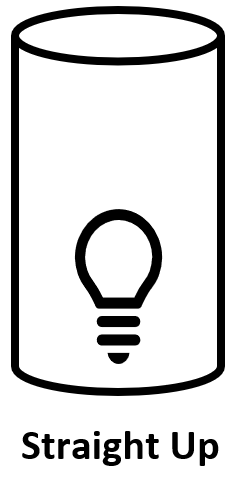
Traditionally sconce lighting and some kitchen table fixtures use
the straight-up orientation. The tower-style bulbs or the bulbs that
have a 360° light dispersion are best for this application.
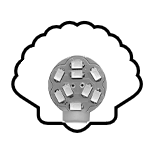
In this case, we want to have the bulb base on the bottom with the LED portion of the bulb facing up. It would be most efficient to use a tower-style bulb that had the LEDs in a 360° cylinder for omnidirectional lighting. There are some vanity lights primarily Tiffin and Newmar, that use the wedge base bulbs in their shell-shaped glass fixtures. In that case, you should use the flat wedge base bulb FOUND HERE.
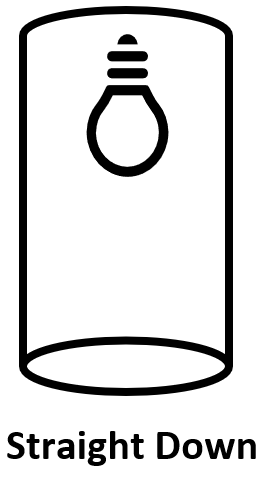
The bulbs that point straight down are usually found over kitchen
tables, counters in 5th wheels, and some bathroom vanities.
In this case, we want to have the bulb base on the top with the LED portion of the bulb facing down. Some of us would like to still have the 360° light dispersion by using a tower-style bulb but to get the MOST light on your counter or table, it is best to use a bulb that will have the base on the back of the LEDs so ALL the LEDs are pointing straight down to the surface that needs to be lighted.
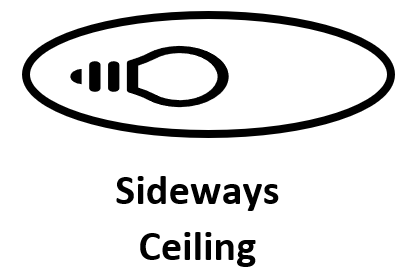
The bulbs that go in sideways, are found in ceilings and over
kitchen tables.
The base, whether it is a G4 Bi-Pin, Wedge, 1141, or 1076 sticks out the side of the bulb and the LEDs are located on only one side of the bulb. This allows ALL the light to be directed DOWN where you need it the most.

Over the bed, sofa, recliners, and captain chairs you will find the swiveling spotlight.
It may have a full-sized spotlight bulb like the 1383 bulb, or the short-neck 1139if bulb.
Please match up the bulb you remove from that fixture with the appropriately sized bulb from the Spotlight category. Beware, sometimes a previous owner may have replaced the original spotlight bulb with a 360° light radiation 1141 bulb. To maximize the light from the swiveling spotlight replace the bulb with one of the available spotlights.
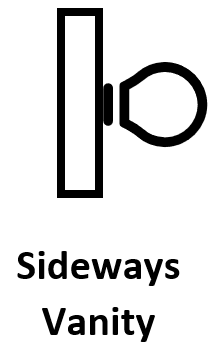
In some RVs and boats, there is a fixture over the bathroom sinks. The bulbs are a globe that looks like this:
If this is the case, click HERE FOR VANITY BULBS.
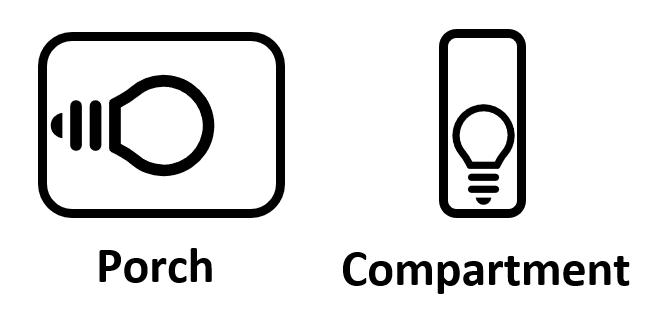
The porch and compartment lights usually go into the fixtures sideways
parallel to the lens.
This means that you would want to use the bulbs that have all the LEDs facing out in the same direction. They are usually flat with the base on the side of the bulb.
Click HERE FOR PORCH AND COMPARTMENT BULBS.
FIXTURE LOCATION and USE:
Where the lighting fixture is located is very important to the brightness and color temperature of the bulb you choose. For example, if you are lighting over the kitchen counters or table you do not want a dim bulb in those fixtures. You would want a brighter bulb that would direct ALL the light down on the surface. In those areas you probably not want a warm bulb (3200K) because you would want a higher contrast light like a 4100K neutral white or a 5500K day white to see what you are doing.
The bulbs used in the wall sconces next to the couch or recliner would need to be brighter if you use them to read, but not so bright if you turn them on for ambient light while relaxing or watching TV with your loved one and a favorite glass of wine.
In the bathroom, you usually need bright light so it’s best to select the bulbs with the higher lumens.
The bedroom is a sanctuary, in my opinion, and at the suggestions of many of our customers, the softer white (3200K) is preferable because it is a softer light (not a stark white light) so it is easier on the eyes when waking up and getting ready for bed.
Ceiling fixtures should be as bright as possible because we turn them on to do something then turn them off when we are finished.
Porch and compartment fixtures need to be as bright as possible.
COLOR TEMPERATURE:
Cabin Bright offers three different color temperatures in our most popular bulbs; 3200K-Warm or Soft White, 4100K-Neutral White, and 5500K-Day White. Our more utilitarian bulbs are offered in 3200K and 5500K. Some customers call the 5500K a “bright” white and that is a misnomer. All the color temperatures generate the same amount of Lumens, the light is just different colors. The whiter the light, the more energy is reflected appearing more intense than a yellowish light. Usually, the “whiter” the light, the brighter it appears to us. The higher the Degrees Kelvin, the whiter the color temperature. Although the whiter lights will appear “brighter” than those of a lower Kelvin reading, the amount of Lumens (measurement for brightness) does not change, and true brightness is not affected.
Here’s our take on the different color temperatures and their application:
3200K-Warm or Soft White: This color is warm and cozy. The light appears more yellow than the 4100K or the 5500K colors. The 3200K bulbs are best suited for bedrooms and ambient lighting in lounges and salons.
4100K-Neutral White: This color is pure white. I compare it to “Crayola® Crayon White.” These bulbs are best suited for general lighting, bathrooms, and kitchen tables.
5500K-Day White: This is the “whitest” color we offer. It best is represented by daylight at noon on a sunny day. These bulbs are best suited for task lighting. High-contrast lighting over kitchen sinks, counters, porch, and compartment lighting.
Now, color and brightness are COMPLETELY subjective. If there were 100 of you with the exact same coach, there would be 100 different orders. So, when you are deciding what bulbs you need, pick what YOU would like to see in your fixture. And when you do remember this: If you are not COMPLETELY satisfied with your choice, call me to arrange a bulb swap to the color you would prefer.


